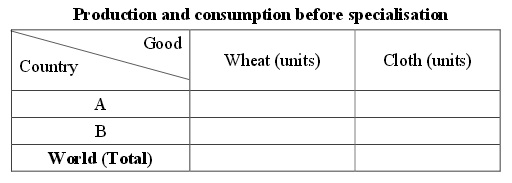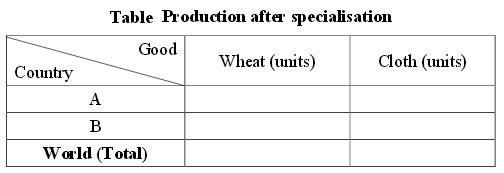Problem 1. Below is a demand schedule for tickets to The Orpheum, Madison, for a performance of Les Miserables.
Price per ticket ($) Quantity demanded (no. of tickets)
56 3,000
60 2,800
64 2,600
68 2,400
72 2,200
76 2,000
80 1,800
a. If The Orpheum has a seating capacity of 2,400 seats and if it sets a price of $72 per ticket, will there be a shortage or surplus of seats available?
b. What will happen to the price of tickets to this event if free market forces were allowed to operate?
c. What is the equilibrium price of a ticket for this performance?
d. Describe the short - run supply curve for tickets to this performance.
e. In anticipation of the next performance, the theater underwent extensive renovation and expanded their seating capacity to 3000 . Describe the new supply curve and compare it to the initial supply curve.
f. Assuming the demand schedule remains the same, what would be the new equilibrium price after the renovation of the theater ?
Problem 2. A country is capable of producing t he following combinations of goods and services per period of time, assuming that it makes full use of its resources.
Goods (units) 100 80 60 40 20 0
Services (units) 0 50 90 120 140 150
a. Draw the production possibility curve for this country.
b. Is it possible for this country to produce the following combinations of goods and services?
(i) 80 units of goods and 50 units of services Yes/No
(ii) 70 units of goods and 90 units of services Yes/No
(iii) 40 units of goods and 100 units of services Yes/No
c. What is the opportunity cost (in terms of services) of producing 20 extra units of goods when this country is initially producing:
(i) 60 units of goods
(ii) 20 units of goods
Problem 3. Referring back to question 2, assume now that technological progress allows a four - fold increase in the output of goods and double the amount of services for any given amount of resources.
a. Assuming that the country’s total amount of resources stays the same, fill in the new figures on the following table to show the new production possibilities.
Goods (units)
Services (units)
b. Draw the new production possibility curve.
c. How has this technological progress affected the opportunity cost of a unit of goods?
A. Stays the same.
B. Doubles.
C. Halves.
D. Increases four times.
E. Decreases four times.
Problem 4. Let Romeo’s demand curve for cheese curds be Qd1 =20 - 2P, where Qd1 is the quantity demanded of cheese curds, and Juliet’s demand curve for cheese curds is Qd2 =30 - 3P, where Qd2 is the quantity demanded of cheese curds. The market supply curve for cheese curds is given by Qs = P+5.
a. Graph Romeo’s demand curve. Graph Juliet’s demand curve on a separate graph. Graph the market supply curve on each of the separate graphs.
b. Suppose Romeo is the only consumer of cheese curds. Calculate the equilibrium price and quan tity for cheese curds.
c. Now on a new graph, graph the market demand curve for cheeses curds by horizontally summing Romeo and Juliet’s demand curves. Also graph the market supply curve.
d. What is the market demand function for cheese curds if Romeo and Juliet are the only consumers of cheese curds in this market? What is the equilibrium price and quantity in the market for cheese curds ?
Problem 5. Imagine a tiny world with only two countries, A and B. These two countries both believe in frugal living and produce only wheat or cloth, to cover their basic needs of food and clothing. Below is a table describing their ability to produce these goods:

a. Which country has the absolute advantage in each commodity?
b. Where are the comparative advantages for A and B?
c. Make the following assumptions and fill in the table showing the production (and therefore consumption) of the two countries under autarky (without specialization and trade). Assume that (a) each country has 2 units of resources (b) each country uses 1 unit of resource for each commodity (c) full employment of resources exists

d. Now consider what happens after the two countries specialize (assume the above assumptions are still true) :

e. Calculate the range of the terms of trade under which both countries would willingly enter into trade.
Problem 6. Explain how supply and demand shift given the following situations (You may use graphs in your explanations). What do we know about the new equilibrium price and quantity (increased, decreased, stays the same, don’t know for sure)?
a. McDonalds opened up twelve new stores in New York. What happens to the market for McDonald meals?
b. Ther e is a dramatic increase in the p rice of teapots. What happens in the market for tea?
c. Everyone in the country receives a stimulus package from the government, but a hurricane destroyed several manufacturing plants. What happens in the general market for manufactured goods?